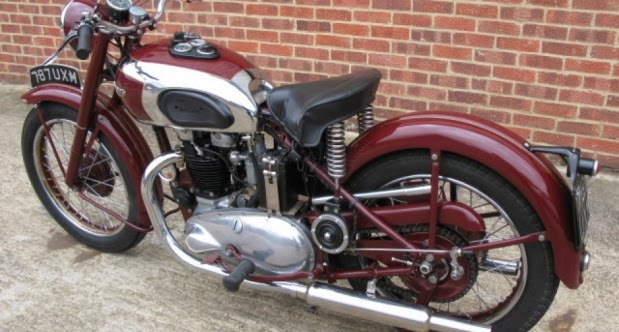TRIUMPH
SPEED TWIN
Motorcycling
was changed for ever when the Speed Twin burst onto the scene in
1937, dramatically proving that two cylinders could be better than
one, and triggering an era of parallel twin dominance that would last
for more than three decades. It's doubtful whether any British bike
has had more influence on those that followed.
The
Speed Twin's appeal was easy to understand. Triumph boss Edward
Turner's 498cc masterpiece was fast, stylish, practical and
reasonably priced, with a distinct performance advantage over the
majority of single-cylinder machines that had dominated motorcycle
production until then.
Turner
himself, rarely reluctant to express an opinion, was in no doubt
about a twin's attributes.
'A
twin gives
better torque,'
he said. 'It will run at higher revolutions than a single of similar
capacity
without unduly stressing major components.
Because
the firing intervals are equal, which means even torque, the
low-speed pulling is better. The engine gives faster acceleration, is
more durable, is easier to silence and is better cooled. In every way
it is a more agreeable engine to handle.'
TRIUMPH
SPEED TWIN
 |
| TRIUMPH SPEED TWIN |
Turner
had recently arrived from Ariel (where he had designed the Square
Four), after that firm had taken over Triumph. He had announced
himself by revamping Triumph's range of 500, 350 and 250cc singles,
boosting sales with fresh styling and catchy new names: Tiger 90, 80
and 70.
Turner's
rare talent for both marketing and styling were again evident in the
Speed Twin, with its evocative name and handsome lines.
TRIUMPH
SPEED TWIN
 |
| TRIUMPH SPEED TWIN |
The
Twin's lean, simple look was not misleading. It used essentially the
same frame and forks as the Tiger 90, was actually slightly lighter
than the 500 single, and its engine was slightly narrower. The drum
brakes were powerful and handling was rated highly, although the
rigid rear end tended to hop over bumps.
It was the
engine, though, that sent the testers of the day into rapture. 'On
the open road the machine was utterly delightful,' reported
The
Motor Cycle.
'Ample power was always available at a turn of the twist-grip, and
the lack of noise when the machine was cruising in the seventies was
almost uncanny.' The magazine managed a .two- way average of 93.7mph
(f51km/h) and a 'truly amazing' one-way best of 107mph (172km/h).
Predictably,
given all this and the Triumph Speed Twin competitive price of little more
than the Tiger 90, the bike was a huge success. The outbreak of the
Second World War put a halt to development, but by 1948, three year's
after war's end, all the main manufacturers had parallel twins of
their own. Meanwhile the Speed Twin had been tuned to create a sports
model, the Tiger 100, and a 650cc derivative was also being
developed. Triumph's parallel twin revolution was well under way.


No comments:
Post a Comment